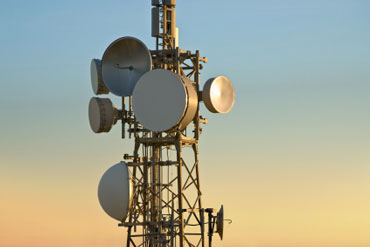November 20, 2015
Weak cellular signal are the problem and signal boosters are the solution (aka bi-directional amplifiers or cell boosters), however, there are caveats to the solution. This document is designed to assist in understanding the dynamic nature of the cellular environment and to assist you in managing user expectations.
It is important to note that users within your facility may have different results. Phone types operate differently inasmuch as an Apple device will receive/send signals and use power differently than an Android device. Most users simply rely on the number of 'bars' to determine cell strength and 3G/4G/LTE indicators for type of service. This is not a direct correlation to signal levels nor an indicator of the stability of a signal. Signal levels are actually read as a negative number (i.e. -85 dBm) and the closer to zero the stronger the signal. In addition, power, to transmit the cell signal is an equally important factor in successful cellular usage. Device settings will affect power availability on the device.
In addition, building construction materials will also influence the cell signals. Metal is the worst when it comes to signal degradation. It is predominantly used for reinforcement in walls as well as fire doors.
The basic system includes an outdoor antenna which receives and sends the cell signal. The outdoor antenna is connected via coax cable to the signal booster located indoors. The signal is amplified by the booster and delivered via coax cable to an interior antenna which rebroadcasts the amplified signal to user devices. The result is improved in-building cellular connections. Users will be able to receive/send calls and substantially slow down battery consumption. Larger and more complex installations will require multiple interior antennas, splitters, taps, and in some cases additional amplifiers and outdoor antenna. Placement of interior antennas and proper separation from the outdoor antenna are important to obtain maximum gain for the system.
The amplifiers are designed to support all the major carriers (Verizon, AT&T, T-Mobile, Sprint and US Cellular) within the 5 cellular bands (frequency ranges). The signal booster system cannot create what doesn't already exist. The distance from your facility to a carrier's tower will affect the initial availability and strength of the carrier signal outside. Too far a distance will result in a low signal yet too close could cause the automatic network protection circuitry to reduce gain or to even turn off one or more of the booster's bands to prevent overload to the nearby site.
A site survey by an experienced RF engineer is necessary to determine carrier signal availability and strength as well as in-building installation requirements such as cable runs, interior antenna(s) and taps placement, splitters, data closet location, roof penetration and other construction and building design considerations.
For more information on security cameras contact info@directnetserv.com or 978-952-6000.
